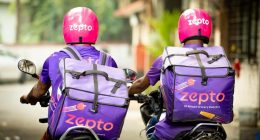After tinkering with technology products (printers, scanners and photocopiers mostly) for a long time, Xerox Technologies is finally ready to set foot into the application ecosystem. And the technology company is doing so with its new transportation aggregator app ‘Go Bengaluru’.
After successful implementations in Los Angeles and Denver, Xerox Research Centre India(XRCI) is piloting the multi-modal urban transportation app in Bengaluru.
The app combines transport modes including walking, cycling, bus, cab, auto-rickshaws and metro rail to provide you with the most desirable method of getting to your destination. This will help commuters a cheap, fast and more sustainable travel option in the over-crowded city.
The over-population of the ‘Silicon Valley of India’ was an evident problem and the need for an urban-mobility platform was a must. The app launched by Xerox aggregates both public and private transport options and shows you the shortest way to get to your destination. This is the first app to aggregate Bengaluru’s new metro line along with BMTC bus services.
Manish Gupta, director of XRCI, says that,
There are several apps now for transportation, but they don’t serve consumers well. We thought from a city’s perspective and in terms of pollution, congestion and infrastructure.
Using the ‘Go Bengaluru’ app, one could easily find his way around the city. Let’s say we walk out of our home and it might tell us to walk to the nearest bus stop. It will then show you information on how many minutes it will take to reach there and the calories burnt in the process. Once you reach the bus-stop, it will then show you the bus number to take to the next stop.
And once you reach the next, if the metro rail route is the fastest and the shortest, then it will ask you to board the metro. Else, if the metro is jam-packed and there’s no public transport in the vicinity, it may ask you to book a cab or an auto-rickshaw as well.
The app is truly multi-modal and typically offers you a number of options, including how much it will cost, how long it will take and how much carbon emissions does it involve(ooh, environment friendly!!). If your commuting in a personal vehicle, it will also suggest you parking stops near your destination.
The Rocky Road ahead!
While Google Maps already seems to aggregate some walking, driving, metro and public transports, it falters a bit on the multi-modal front. You can easily use the Google Maps app to navigate your way around town, and now even look for Uber/Ola taxis with their estimated fares inside the app. And Google Maps is not limited to any one city, while the Xerox app seems to be for a particular geographical location.
Xerox is able to provide all this information and more because of its partnership with organisations like Ola, BMTC and several more. These service integrations and user data help make the app more relevant. With partners like BMTC, the XRCI is also using its recently launched Intelligent Transport System(ITS) to improve public transport route options. Using this technology, Xerox can now also predict the expected time of arrival of buses. And such a feature is still lacking in Google Maps.
XRCI believes that once the app gains traction, they will have enough user data collected to make more informed decisions on the demand-supply front. It will help them decide when to increase the frequency on a particular route or start a new route instead.
Ekroop Caur, managing director, BMTC adds that,
The Go Bengaluru app will help citizens embrace technology in transportation like never before.
If you’re a Bengaluru resident, do give the Xerox app a try and share your opinion in the comments section down below. Is ‘Go Bengaluru’ better than Google Maps?





